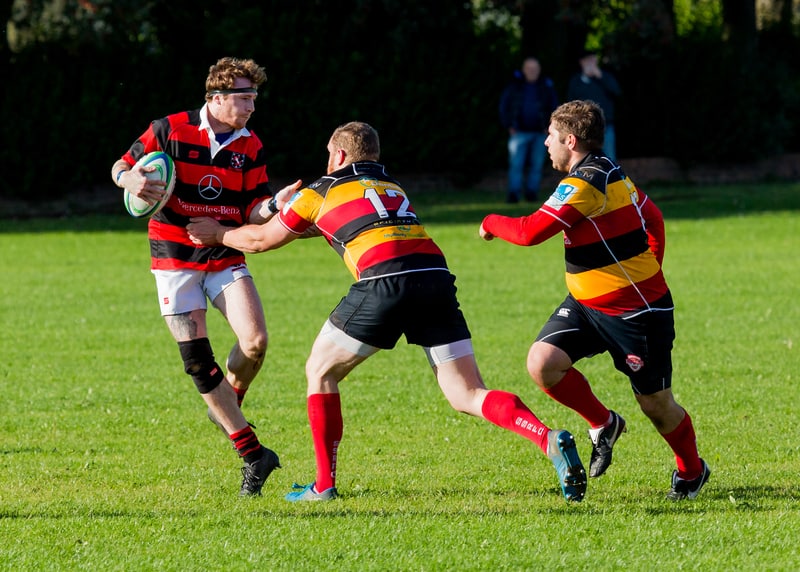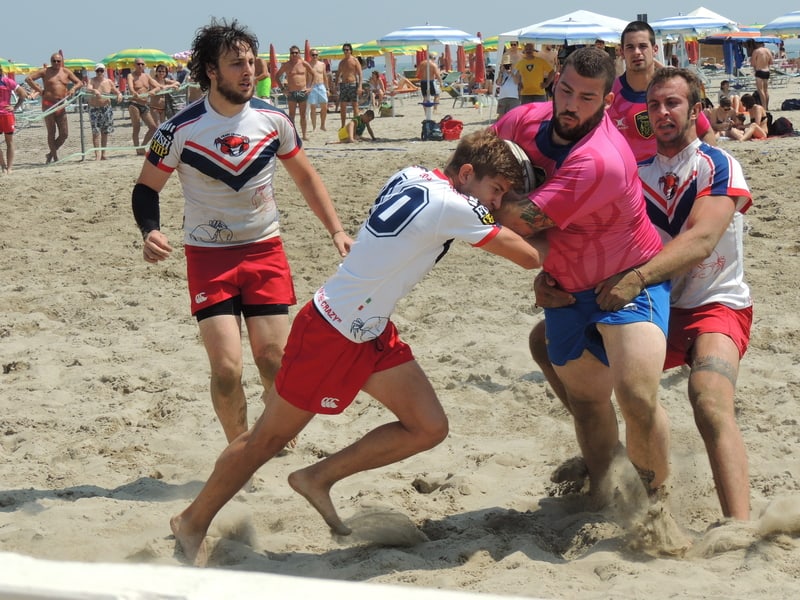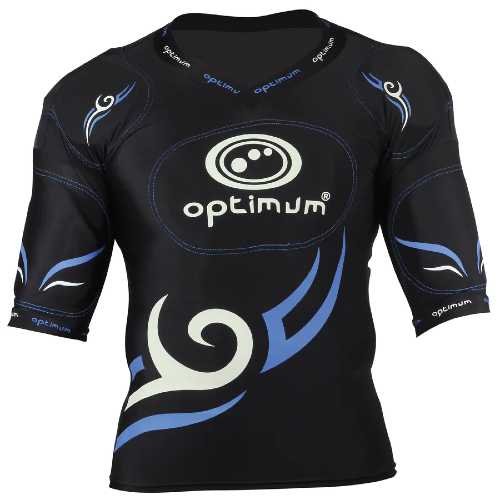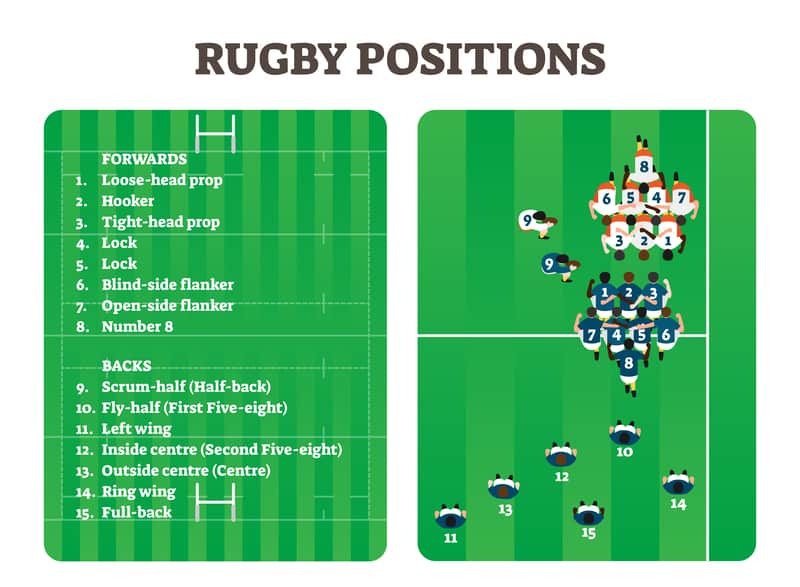
Are you thinking about playing rugby, but ever so slightly intimidated because you’re skinny? It’d be understandable if you were. So, in case you’re wondering whether it’s ok for thin people to play the game, this post should put your mind at ease.
Skinny people can play rugby. It is a game for all shapes and sizes regardless of build. A lighter, thinner person, can be quicker on the field and better at making use of space. In rugby technique is more important than size or weight.
I get you, turn on the TV to watch a game of rugby and the players look huge. But, look more carefully and you’ll see the smaller, leaner players too. Rest assured, you can play rugby if you’re skinny.
Skinny or small, there’s a place for you on the rugby pitch.

It’s worth noting, that the rugby you watch on TV is played by the pros. And the professional game encourages the building up of body mass and bulk on a far greater scale than the amateur game. And yet still, in the professional game you will see the smaller skinnier players tearing it up on the pitch with electrifying pace and ball in hand, or bringing down players twice their size in defence.
It doesn’t matter what size you are. Whether you’re tall and skinny or short and thin, there is a place for you on the field.
Granted, in rugby bigger players have a physical advantage, but although rugby is a contact sport it isn’t just about physicality. It’s about finding and exploiting space on the field. Using teamwork to pass the ball and keep it out of the contact area. Identifying space and running into space is key.
There’s so much more to rugby than just the contact. The skill of passing the ball off both hands, kicking out of hand, place kicking, picking your running lines. It’s a deceptively skilful game that to the untrained eye can just look like one big bruising encounter.
Whether you can play rugby or not really isn’t determined by your size. It’s determined by your attitude to the contact area. As long as you can give 100% commitment to the contact elements of rugby and are willing to embrace the physicality of the game, then you’ll do just fine.
“It’s not the size of the dog in the fight, it’s the size of the fight in the dog“
Mark Twain
Things to consider as a skinny player.
A few tips for slighter built players:-
Yes, there will be bigger players on the pitch than you and they will try to run through you, but that’s because generally they’re not going to be quick footed enough to sidestep you and they don’t have the pace to run around you.
However, as long as you have mastered your tackling technique you’ll bring them down easily. As a slight player myself, I’ll always remember being taught that age old phrase in my childhood:-
“The bigger they are the harder they fall.“
And remember this, when a big lumbering forward runs straight at someone, more often than not they’re actually expecting to be brought down, so they will fall to the ground quickly. It’s part of the attacking strategy, to tie up defenders in the tackle, recycle the ball quickly and move onto the next phase of play.
The important thing to bear in mind is when you have the ball don’t try and run through someone twice your size; or at least don’t expect to run through them. The likelihood is you will be brought down, which is fine and has its own benefit. The ball gets recycled and you move on.
If you’re quick handed and willing to take the hit then you’ll be very good at drawing defenders into the tackle, and passing the ball out of the tackle just before the contact.
As a skinny player, when you want to get past your opposition with ball in hand, then you’ve got to go for the sidestep, or use your pace to run around the defender. Because if you try to run through them, you will lose the physical battle.
If you’re nervous about the contact, wear protective equipment.

If you are apprehensive about making tackles or being tackled by players twice your size, then it’s worth checking out the protective equipment that’s out there.
Kit like shoulder pads, body armour and padded shorts are more widely used than they used to be. If worn, they will make the force of contact that bit less abrasive on your body. They’re all worn underneath your rugby shorts and shirt so are reasonably discreet.
Don’t buy it all for your first game though. Turn up to a few sessions with just your standard kit to get a feel for the contact. And don’t forget the important protective equipment like a mouthguard. As you get to know some players, have a chat to them about what protective kit they use.
The best positions to play if you’re skinny.
As a skinnier player, you’re most likely going to be better suited to playing in the back line. However, there are also positions in the scrum that could suit you. Sure, if you’re slight of build, then playing in the front row probably isn’t the best idea. Props and hookers are better suited to the shorter stockier body type.

Flanker
If you’re a strong wiry type, and you’re the sort of character that wants to be in the thick of it, having as much time in and around the contact area as possible area; then playing as a flanker could be the perfect position for you. As a flanker you’ll be contesting for the ball at the breakdown and putting in plenty of tackles throughout the course of a match.
2nd row
If you’re tall and thin, then you’ll fit in well playing at second row. Height is one of the determining factors in this position and you don’t need too much pace. You’ll find yourself becoming an integral part of the lineout, often being the first receiver in this set play. There have been plenty of 2nd rows with tall slight frames, who have excelled in the professional game.
The backs
You can play pretty much anywhere in the back line if you’re skinny. The key requisites here are ball skills, kicking skills and pace. The different positions in the back line require more frequent implementation of the different skill sets.
Scrum half
If you’re short, you’ve got a good pass on you (and you like a bit of confrontation!) then scrum half could be the position for you. It doesn’t matter if you’re skinny or stocky. As long as you’ve got a good turn of pace, have an ability to identify where the space is on the field and can pass well to the left and the right then you’ll fare well. The scrum half is the link player from the forwards to the backs.
Fly half
As a fly half your key skill sets are kicking and ball handling skills. You’ll need to be able to read the game well. Pace and a good side step will also hold you in good stead. At fly half you’ll be drawing defenders and passing the ball out of the tackle to teammates who are running hard fast lines into space. You’ll also be ‘playing for territory’ by kicking the ball out of hand in order to determine where on the pitch the majority of the match is going to be played.
Inside or outside centre
In the professional game you’ll find that most centres are pretty well built these days. In the back line this is probably the position better suited to players with a bit of bulk to them. But that doesn’t mean it won’t suit you if you’re of a slight build – especially in the amateur game. As a centre you’ll be running hard lines, often ‘straightening’ the ball up into the contact area.
Wing
Out and out pace with the ability to step and weave in order to create your running lines whilst avoiding contact is what will make for a good winger. Often small and skinny in build, wingers are the ‘finishers’ in the game, exploiting small gaps on the pitch and using their pace to get over the try line.
Full back
Again at full back, certain skill sets are far more important than body type. You can be short or tall, skinny or stocky. As long as you can run at pace, read the game well, catch high balls and kick well out of hand then full back could be the position for you.
Rugby is an all inclusive sport. It’s a game for all shapes and sizes, in fact the more varied the build and body weight of a team, the better balanced it is all round. Sure, there are positions which are better suited to the stockier player, but there are also positions perfectly suited to the leaner, lighter players on the pitch.
